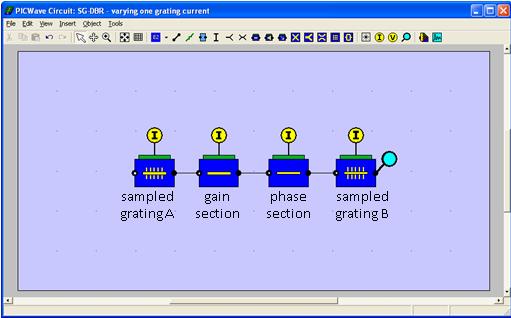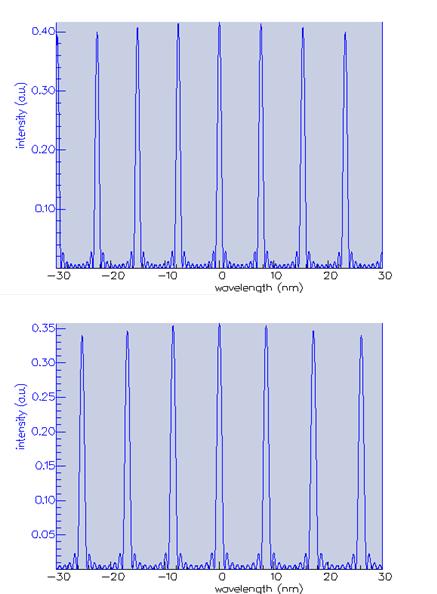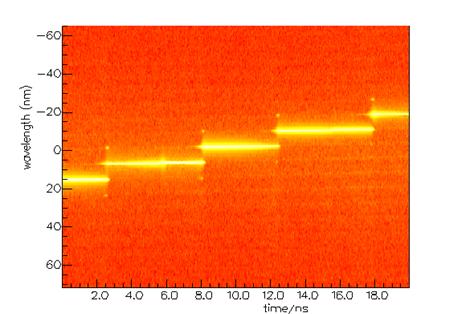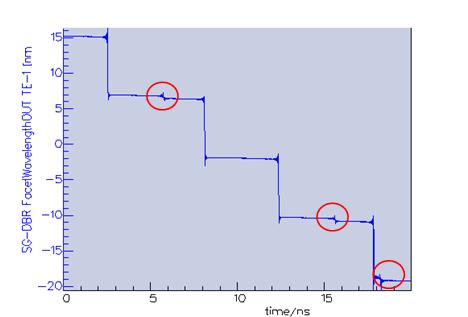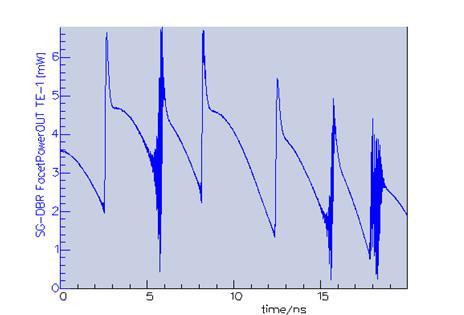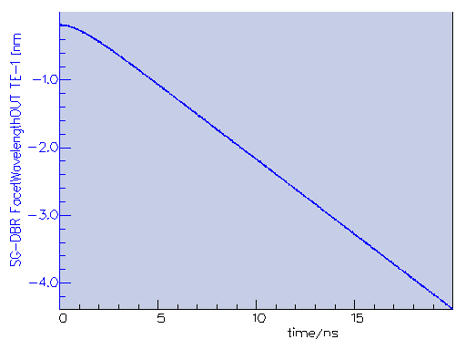PICWaveA photonic IC, laser diode and SOA simulator |
    |
An SG-DBR tuneable laser diodeSimulation with PICWave softwarePICWave can model a large variety of semiconductor lasers. This example shows a tuneable sampled grating distributed Bragg reflector (SG-DBR) laser diode simulated with PICWave.
Design of the SG-DBR laser
Design of the SG-DBR laserThe SG-DBR laser consists of 4 sections. Grating sections at each end provide optical feedback. Within each grating section, the grating is periodically interrupted (i.e. set to zero) thereby creating a sampled grating consisting of a series of grating bursts. (This was achieved using an “on/off” apodisation profile – PICWave allows arbitrary grating apodisation.) The two gratings, A and B, have identical grating burst lengths of 5µm, but different burst periods of 40 and 45µm respectively. The difference in the burst periods of the two sampled gratings leads to a corresponding difference in the mode spacings of their respective reflection spectra.
Lasing can only occur at wavelengths where strong reflections from both gratings coincide; this will only occur at certain widely spaced wavelengths, due to the different mode spacings of the two gratings. This allows the laser to be tuned by a “Vernier scale” effect – shifting the reflection comb of one grating by effective index tuning will cause the lasing wavelength to jump discretely by a large amount as the alignment passes from one grating mode order to the next. The effective index tuning is achieved by plasma effect through a current injection into one of the gratings. The rest of the laser consists of a gain section to provide the required optical amplification, and a phase tuning section to allow fine-tuning of the lasing wavelength by current injection (longitudinal modes are much more closely spaced that than the grating reflections). The grating lengths are 450 and 360µm, respectively, and the total laser length is 1425µm. Simulation of the SG-DBR laserThe SG-DBR was simulated by linearly increasing the injection current in grating A over 20ns, causing its effective index to fall steadily, whilst holding constant the currents injected into the other sections. The figures below show the simulation results for the laser output. Clearly visible are the grating mode hops, where the lasing wavelength jumps discretely by ~8nm between sampled grating modes according the Vernier scale effect described above. Smaller cavity mode hops of ~0.3nm are also visible.
The output power of the laser peaks when a given pair of grating reflections is in alignment. The output power tails off as the device is detuned, until the next grating mode hop, and so on. One can also observe how cavity mode hops lead to sudden increase in output power, accompanied by strong beating between two cavity modes involved in the mode hop.
In fact, the SG-DBR laser is operated correctly when the current is varied proportionally in both gratings and the phase tuning section, such that the refractive index throughout the whole laser changes uniformly. The laser can then be fine-tuned because the lasing wavelength changes continuously and exhibits no grating or cavity mode hops.
|

